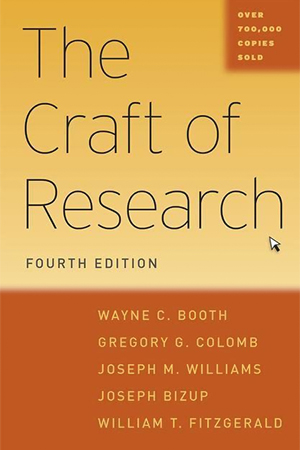This table is a comprehensive doctrinal comparison chart that systematically evaluates a wide range of Christian theological themes according to their creedal affirmation, doctrinal tier, alignment with Scripture, key supporting verses, and a concise explanatory detail for each. It includes foundational doctrines such as the Trinity, Incarnation, Resurrection, and Justification, alongside more controversial topics like Papal Infallibility, Purgatory, Sacramental Efficacy, and Marian dogmas. Each entry is assessed through the lens of Scripture’s authorial intent, with references categorized as Affirms, Rejects, or Requires Contextual Analysis. The creedal columns reference their affirmation in the Apostles’, Nicene, and Athanasian creeds, while the tier classification helps distinguish between primary, secondary, and tertiary matters of theological importance.
Introduction
This table is designed to aid readers, teachers, and theological students in discerning the clarity, coherence, and theological grounding of various doctrinal claims as measured by their correspondence to Scripture and the historical confessions of the Church. It is particularly useful for evaluating the degree to which teachings—especially those contested between Roman Catholic, Eastern Orthodox, and Protestant traditions—maintain fidelity to the biblical witness. The inclusion of explanatory notes offers interpretive insight into the theological and practical implications of each doctrine, helping readers understand not only what the Church has historically taught but also how those teachings stand when examined in light of Scripture’s testimony. In sum, this table serves as both a diagnostic and educational resource for those seeking to grow in doctrinal understanding, spiritual maturity, and alignment with the teachings handed down through the apostles and preserved in the canon of Scripture.
Spirit & Truth
According to Scripture, the Holy Spirit is the divine Person who convicts the world of sin, righteousness, and judgment (John 16:8), and it is through His power that the soul is drawn to repentance and faith. While Scripture is the clear and inspired foundation of all truth (2 Tim 3:16-17), the Spirit is not confined to written text alone; He works dynamically through the Church’s corporate life, including people, tradition, and liturgical expression, to lead believers into deeper holiness and communion with God. As seen in Acts 2:42, the early Christians devoted themselves not only to “the apostles’ teaching,” but also to “the fellowship, the breaking of bread, and the prayers”—practices which were deeply communal and rhythmically structured. This shows that the Spirit can and does move within ordered, historical expressions of worship and fellowship, drawing hearts to repentance and shaping them through patterns of faithfulness.
Tradition, when properly subordinate to Christ and aligned with the apostolic gospel, becomes a vessel through which the Spirit preserves and transmits the truths of God across generations. Paul exhorts the Thessalonians, “stand firm and hold to the traditions that you were taught by us, either by our spoken word or by our letter” (2 Thess 2:15). Here, both oral and written instruction are presented as valid conduits of divine truth, passed on through the Church’s memory and practice. The Spirit, who indwells the Church (1 Cor 3:16), is able to guard the apostolic deposit through faithful teachers, creeds, catechisms, and councils that maintain continuity with biblical teaching. While tradition must never override Scripture, it often provides the scaffolding for the faithful interpretation of Scripture and the preservation of doctrinal clarity, shaping hearts toward sanctification and communion with the Triune God.
Furthermore, liturgy and historical continuity provide a sacred context for worship and spiritual formation, allowing believers to participate in rhythms of grace where the Spirit works over time. In Hebrews 12:28–29, the Church is called to offer to God “acceptable worship, with reverence and awe,” implying form and spiritual posture that is shaped by covenant history. When liturgical forms are grounded in Scripture, they become means by which the Spirit fosters humility, repentance, and worship “in spirit and truth” (John 4:24). Through the repetition of ancient prayers, the celebration of the sacraments, and the participation in creedal confession, the believer is catechized into the gospel story. The Spirit uses these tools not merely as aesthetic or cultural expressions, but as spiritually formative practices that deepen our union with Christ (1 Cor 10:16–17), sanctify the soul, and bring about a life of obedient faith empowered by divine grace.
Framework & Grid
This doctrinal comparison table is a structured theological reference designed to assess a wide range of Christian teachings in light of their scriptural foundation, historical affirmation, and theological significance. Its primary purpose is to equip readers with a clear, comparative framework for evaluating core and contested doctrines—particularly those that distinguish Roman Catholic, Eastern Orthodox, and Protestant traditions. Each row addresses a specific doctrinal theme and includes five key categories: (1) Creedal Affirmation, indicating whether the doctrine is explicitly upheld in the Apostles’, Nicene, or Athanasian Creeds; (2) Doctrinal Necessity, classifying the issue as primary, secondary, or tertiary in terms of its necessity for faith and ecclesial unity; (3) Scriptural Fidelity, summarizing whether Scripture affirms, rejects, or requires contextual analysis for that doctrine; (4) Scriptural References, listing representative passages relevant to the issue; and (5) Explanatory Comments, offering a concise theological summary to clarify the issue’s meaning and implications. This table aims to support faithful discernment, doctrinal clarity, and responsible theological engagement grounded in the authority of Scripture and the confession of the historic Church.
Table of Topics
| Doctrinal Theme | Creedal Affirmation | Ecumenical Council | Doctrinal Necessity | Scriptural Fidelity | Scriptural References | Explanatory Comments |
|---|---|---|---|---|---|---|
| Trinity | Apostles’, Nicene, Athanasian | Nicaea I (325 AD), Constantinople I | Primary | Affirmed | Matt 28:19; 2 Cor 13:14 | Clearly affirmed by the biblical text with direct or repeated scriptural testimony. |
| Incarnation of Christ | Apostles’, Nicene, Athanasian | Chalcedon (451 AD), Ephesus (431 AD) | Primary | Affirmed | John 1:14; Phil 2:6–8 | Clearly affirmed by the biblical text with direct or repeated scriptural testimony. |
| Death and Resurrection of Christ | Apostles’, Nicene, Athanasian | Nicaea I (325 AD), Constantinople I | Primary | Affirmed | 1 Cor 15:3–4; Acts 2:23–24 | Clearly affirmed by the biblical text with direct or repeated scriptural testimony. |
| Second Coming & Judgment | Apostles’, Nicene, Athanasian | Constantinople I | Primary | Affirmed | Acts 17:31; Rev 20:11–15 | Clearly affirmed by the biblical text with direct or repeated scriptural testimony. |
| Forgiveness of Sins | Apostles’, Nicene | Constantinople I | Primary | Affirmed | Luke 24:47; Acts 10:43 | Clearly affirmed by the biblical text with direct or repeated scriptural testimony. |
| Virgin Birth | Apostles’, Nicene | Constantinople I | Primary | Affirmed | Isa 7:14; Luke 1:34–35 | Clearly affirmed by the biblical text with direct or repeated scriptural testimony. |
| Bodily Resurrection of the Dead | Apostles’, Nicene | Constantinople I | Primary | Affirmed | John 5:28–29; 1 Cor 15 | Clearly affirmed by the biblical text with direct or repeated scriptural testimony. |
| Baptism (As sign or sacrament) | Nicene (As sign of faith) | Nicaea I (325 AD), Constantinople I, Ephesus (431 AD, Spain), Chalcedon (451AD), Carthage (418 AD), Orange (529 AD), Lateran Council IV (1215 AD), Florence (1439), Trent (1545-1563) | Primary | Affirmed | Acts 2:38; 1 Pet 3:21 | Clearly affirmed by the biblical text with direct or repeated scriptural testimony. |
| Mode of Baptism (Immersion, Pouring, Sprinkling) | Absent | Nicaea I (325 AD), Constantinople I, Elvira (305 AD, Spain), Carthage (418 AD), Ravenna (1311–1312 AD) Lateran Council V, Didache (70–100 AD) | Secondary | Affirmed | Immersion: Burial and Resurrection Matt 3:16, John 3:23, Acts 8:38-39, Rom 6:3-4 Pouring (Affusion): Valid in patristic contexts. Acts 2:17, Acts 10:44-48, Titus 3:5-6, Didache 7 Sprinkling (Aspersion): Used in cases of necessity. Ezek 36:25, Heb 10:22, Heb 12:24 | The New Testament does not explicitly prescribe a singular mode of baptism—immersion, pouring, or sprinkling —but different traditions interpret several passages as supporting one mode or another. |
| Church (One, Holy, Catholic, Apostolic) | Nicene | Secondary | Affirmed | Eph 4:4–6; 1 Tim 3:15 | Clearly affirmed by the biblical text with direct or repeated scriptural testimony. | |
| Justification (Faith Alone vs. Faith & Works) | Absent | Primary | Affirmed | Rom 3:28; James 2:24 | Scripture affirms justification by faith, but must be understood with James. | |
| Purgatory | Absent | Secondary | Absent | Luke 16:26; Heb 9:27 | No post-mortem purgation described; Heb 9:27 states judgment follows death. | |
| Perpetual Virginity of Mary | Absent | Tertiary | Contradicts | Matt 1:25; Mark 6:3 | Matt 1:25 and Mark 6:3 indicate normal marital relations and siblings. | |
| Immaculate Conception of Mary | Absent | Later dogma (1854) | Tertiary | Contradicts | Rom 3:23; Luke 1:47 | No Scripture suggests Mary was exempt from original sin (Rom 3:23; Luke 1:47). |
| Assumption of Mary | Absent | Later dogma (1950) | Tertiary | Absent | Absent | No biblical text records or implies Mary’s bodily assumption into heaven. |
| Women’s Ordination | Absent | Secondary | Rejected | 1 Tim 2:12; 1 Cor 14:34–35; 1 Tim 3:1–2 | Scripture explicitly restricts authoritative teaching and pastoral office to qualified men; no precedent for female presbyters or bishops in apostolic witness. | |
| Authority Scripture vs. Scripture & Tradition) | Implied | Condemned by the Council of Orange (529 AD) | Primary & Secondary | Affirmed & Rejected | Mark 7:6–13; 2 Tim 3:16 | Scripture affirms its own authority; tradition not to exceed it. |
| Union with Christ (Theosis vs. Imputation) | Absent | Secondary | Affirmed | John 17:21–23; 2 Pet 1:4 | Scripture teaches participation in Christ, but without metaphysical speculation. | |
| Total Depravity | Absent | Not Addressed | Secondary | Affirmed | Rom 3:10–12; Eph 2:1; John 6:44 | Human nature is fully corrupted by sin, rendering the will incapable of turning to God without divine regeneration. (Post-Reformation) |
| Unconditional Election | Absent | Not Addressed | Secondary | Affirmed | Eph 1:4–5; Rom 9:11–16; John 15:16 | God elects individuals to salvation not based on foreseen faith but solely on His sovereign will and grace. (Post-Reformation) |
| Limited Atonement | Absent | Not Addressed | Secondary | Affirmed | John 10:14–15; Eph 5:25; Matt 1:21 | Christ’s atonement is effectual and intended specifically for the elect, securing their salvation. (Post-Reformation) |
| Irresistible Grace | Absent | Not Addressed | Secondary | Affirmed | John 6:37; Rom 8:30; Acts 13:48 | God’s call to the elect is effectual; His grace overcomes resistance and brings the sinner to faith. (Post-Reformation) |
| Perseverance of the Saints | Absent | Not Addressed | Secondary | Affirmed | Phil 1:6; John 10:28–29; Rom 8:38–39 | Those truly born of God will persevere in faith and holiness to the end, sustained by God’s power. (Post-Reformation) |
| Once Saved Always Saved (OSAS) | Absent | Secondary | Affirmed | John 10:28–29; Rom 8:38–39; Phil 1:6 | While not historically creedal, OSAS reflects the biblical promise that true believers, once justified, will be preserved by God’s power to the end. Distinct from antinomianism, it requires fruit-bearing faith and sanctification (John 15:1–6). (Modern Evangelical Formulation) | |
| Infralapsarianism | Absent | Tertiary | Affirmed | Rom 8:29–30; Eph 1:4–5; 2 Tim 1:9 | God’s decree to elect follows His decree to permit the Fall. This view emphasizes God’s mercy without denying His sovereignty. (Post-Reformation Scholasticism) | |
| Supralapsarianism | Absent | Tertiary | Affirmed | Rom 9:11–23; Eph 1:4–11; Isa 46:10 | God’s decree to elect or reprobate logically precedes His decree to permit the Fall, emphasizing His ultimate sovereignty and purpose. (Post-Reformation Scholasticism) | |
| Prevenient Grace | Absent | Condemned by Council of Orange (529 AD) | Secondary | Affirmed & Rejected | John 1:9; Titus 2:11; Acts 7:51 | Common in Wesleyan-Arminian theology, it teaches grace that enables all to respond to the gospel. Not affirmed in Reformed traditions due to lack of effectual power in regeneration. (Arminian Theology) |
| Sacraments (Definition and Number) | Absent | Secondary | Affirmed & Rejected | Luke 22:19–20; 1 Cor 11:23–26 | Sacramental grace affirmed; a number of sacraments and operations vary. | |
| Eucharist (Real Presence, Transubstantiation, Memorial) | Absent | Secondary | Affirmed & Absent | Luke 22:19–20; 1 Cor 11:24–25 | Christ’s presence affirmed, but not defined metaphysically. | |
| Eucharistic Adoration | Absent | Secondary | Rejected | John 4:23–24; Heb 9:24 | Adoration is due to God, not to elements. | |
| Papal Infallibility | Absent | Secondary | Rejected | Absent | Inconsistent with Acts 15 and Gal 2:11, where Peter is corrected by Paul. | |
| Filioque Clause | Western only | Secondary | Absent | John 15:26 | Absent in John 15:26; Spirit proceeds from the Father—not stated from “Father and Son.” | |
| Scholasticism vs. Mysticism | Absent | Secondary | Affirmed & Rejected | 1 Cor 2:6–16; Eph 3:18–19 | Both present in Scripture; emphasis and balance vary across traditions. | |
| Confession and Absolution | Absent | Secondary | Affirmed | John 20:23; James 5:16 | Forgiveness mediated through confession and prayer, not ecclesiastical absolution. | |
| Habitual and Besetting Sin | Absent | Secondary | Affirmed | Heb 12:1; Rom 6:12–14; 1 John 3:6–10 | Scripture warns against ongoing, unrepentant sin while acknowledging the believer’s struggle against indwelling sin. Persistent sin without repentance is incompatible with regeneration and sanctification. True believers fight sin by the Spirit’s power (Rom 8:13). | |
| Icons and Veneration of Saints | Absent | Tertiary | Rejected | Ex 20:4–5; Rev 19:10 | Image veneration forbidden; worship belongs to God alone. | |
| Monasticism and Asceticism | Absent | Tertiary | Affirmed | Matt 19:21; 1 Tim 4:8 | Monastic withdrawal not mandated by Scripture. | |
| Canon of Scripture (Apocrypha / Deuterocanon) | Absent | Secondary | Affirmed | 2 Tim 3:16–17; Rom 3:2 | Scripture affirmed canon; Apocrypha not treated as equal by Christ or apostles. | |
| Original Sin and Inherited Guilt | Absent | Primary & Secondary | Rejected | Rom 5:12–19; Ps 51:5 | Scripture teaches both inherited sin and guilt, especially in Pauline theology. | |
| Merit and Condign Merit | Absent | Secondary | Affirmed | Rom 3:27–28; Eph 2:8–9 | Merit is ruled out as a basis for salvation in favor of grace and faith. | |
| Imputed vs. Infused Righteousness | Absent | Primary & Secondary | Rejected | Rom 4:5; Gal 2:16 | Justification is described as imputed righteousness through faith, not infused qualities. | |
| Sacramental Efficacy (Ex Opere Operato) | Absent | Not addressed in any early council | Secondary | Rejected | Gal 3:2–5; Heb 11:6 | Sacramental grace is mediated by faith, not automatically conferred through ritual alone. |
| Mary as Mediatrix / Co-Redemptrix | Absent | Tertiary | Rejected | 1 Tim 2:5 | Christ is the sole mediator; additional mediation contradicts Scripture. | |
| Apostolic Succession and Valid Sacraments | Implied (Nicene, Acts) | Affirmed – Council of Ephesus (431), although not universally defined | Secondary | Affirmed | Acts 1:20–26; 2 Tim 2:2 | Apostolic teaching affirmed, but succession not required for valid sacraments. |
| Visible & Invisible Church | Absent | Secondary | Rejected | Rom 2:28–29; Heb 12:22–24 | True church includes all regenerate; not merely visible institution. | |
| Role of Monasticism in Sanctification | Absent | Tertiary | Rejected | 1 Cor 7:24; Col 2:20–23 | Monastic discipline is commendable but not a requirement for godliness. | |
| Invocation of Saints / Intercession of the Dead | Absent | Secondary | Rejected | Deut 18:10–12; 1 Tim 2:5 | Communicating with the dead is forbidden and Christ alone intercedes. | |
| Development of Doctrine | Absent | Secondary | Rejected | Gal 1:8–9; Rev 22:18–19 | Doctrinal additions warned against in strong terms (Gal 1:8–9; Rev 22:18–19). | |
| Church-State Relations | Absent | Secondary | Rejected | Matt 22:21; Rom 13:1–7 | Obedience to rulers affirmed; not church-state fusion. | |
| Indulgences | Absent | Secondary | Rejected | Rom 3:24; Heb 9:27 | No biblical support for reducing post-sin punishment via indulgences. | |
| Sacrifice of the Mass | Absent | Secondary | Rejected | Heb 10:10–14 | Christ’s sacrifice was once for all; not to be repeated. |



















